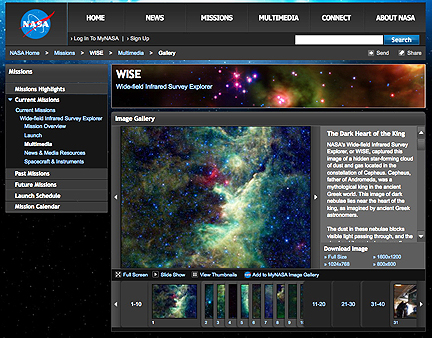[SatNews] After completing its primary mission to map the infrared sky, NASA's Wide-field Infrared Survey Explorer, or WISE, has reached the expected end of its onboard supply of frozen coolant.
Although WISE has 'warmed up,' NASA has decided the mission will still continue. WISE will now focus on our nearest neighbors — the asteroids and comets traveling together with our solar system's planets around the sun. WISE launched Dec. 14, 2009, from Vandenberg Air Force Station in California aboard a Delta II launch vehicle. Its 40-centimeter (16-inch) infrared telescope scans the skies from an Earth-circling orbit crossing the poles. It has already snapped more than 1.8 million pictures at four infrared wavelengths. Currently, the survey has covered the sky about one-and-one-half times, producing a vast catalogue containing hundreds of millions of objects, from near-Earth asteroids to cool stars called "brown dwarfs," to distant, luminous galaxies. To date, WISE has discovered 19 comets and more than 33,500 asteroids, including 120 near-Earth objects, which are those bodies with orbits that pass relatively close to Earth's path around the sun. More discoveries regarding objects outside our solar system, such as the brown dwarfs and luminous galaxies, are expected.
The NEOWISE Post-Cryogenic Mission is designed to complete the survey of the solar system and finish the second survey of the rest of the sky at its new warmer temperature of about minus 203 degrees Celsius (minus 334 degrees Fahrenheit) using its two shortest-wavelength detectors. The survey extension will last one to four months, depending on early results. NEOWISE will also keep observing other targets, such as the closest brown dwarfs to the sun. In addition, data from the second sky scan will help identify objects that have moved in the sky since they were first detected by WISE. This allows astronomers to pick out the brown dwarfs closest to our sun. The closer the object is, the more it will appear to move from our point of view. The WISE science team now is analyzing millions of objects captured in the images, including many never seen before. A first batch of WISE data, covering more than half the sky, will be released to the astronomical community in spring 2011, with the rest to follow about one year later.


